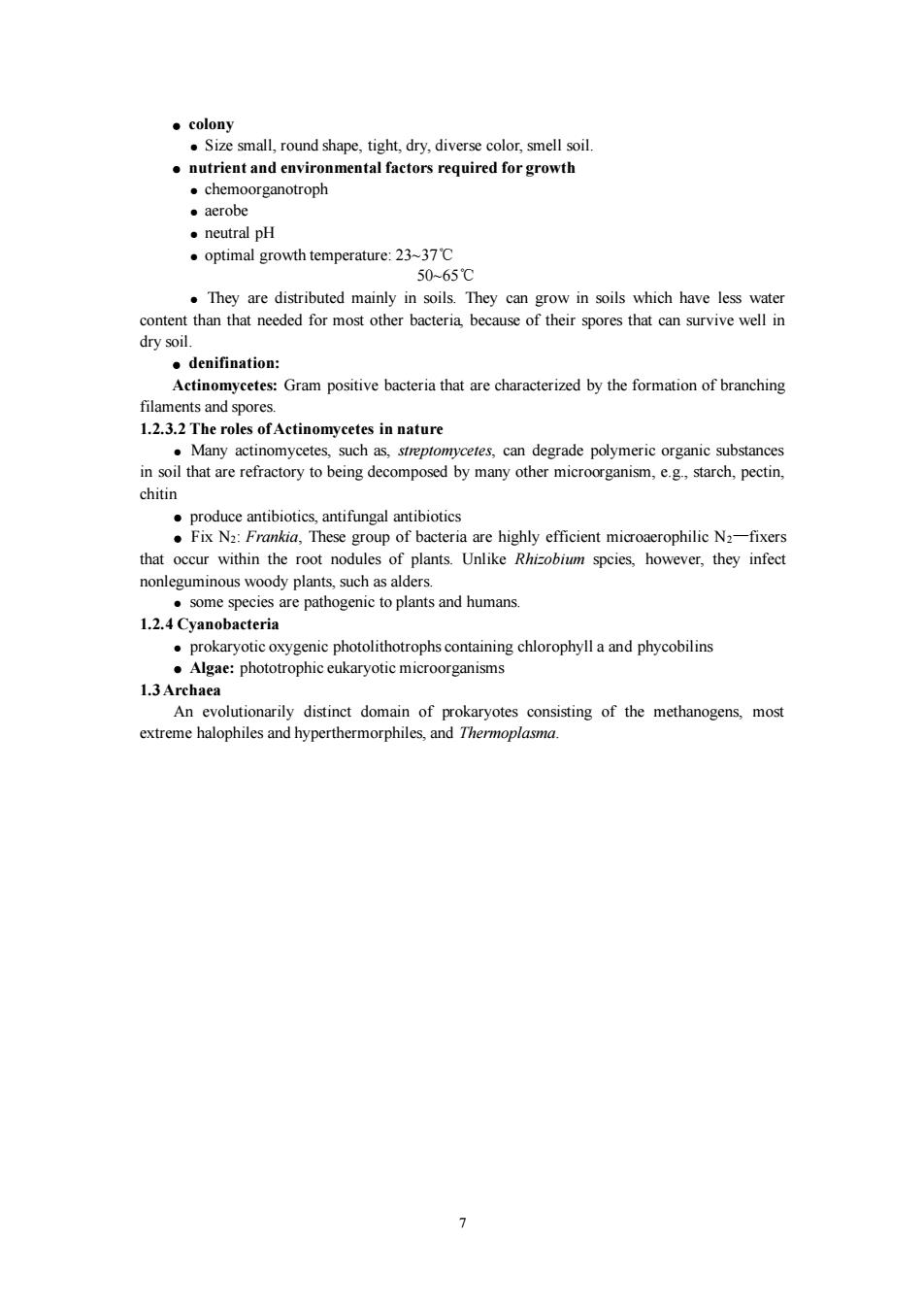正在加载图片...

7 ● colony ● Size small, round shape, tight, dry, diverse color, smell soil. ● nutrient and environmental factors required for growth ● chemoorganotroph ● aerobe ● neutral pH ● optimal growth temperature: 23~37℃ 50~65℃ ● They are distributed mainly in soils. They can grow in soils which have less water content than that needed for most other bacteria, because of their spores that can survive well in dry soil. ● denifination: Actinomycetes: Gram positive bacteria that are characterized by the formation of branching filaments and spores. 1.2.3.2 The roles of Actinomycetes in nature ● Many actinomycetes, such as, streptomycetes, can degrade polymeric organic substances in soil that are refractory to being decomposed by many other microorganism, e.g., starch, pectin, chitin ● produce antibiotics, antifungal antibiotics ● Fix N2: Frankia, These group of bacteria are highly efficient microaerophilic N2—fixers that occur within the root nodules of plants. Unlike Rhizobium spcies, however, they infect nonleguminous woody plants, such as alders. ● some species are pathogenic to plants and humans. 1.2.4 Cyanobacteria ● prokaryotic oxygenic photolithotrophs containing chlorophyll a and phycobilins ● Algae: phototrophic eukaryotic microorganisms 1.3 Archaea An evolutionarily distinct domain of prokaryotes consisting of the methanogens, most extreme halophiles and hyperthermorphiles, and Thermoplasma.7 ● colony ● Size small, round shape, tight, dry, diverse color, smell soil. ● nutrient and environmental factors required for growth ● chemoorganotroph ● aerobe ● neutral pH ● optimal growth temperature: 23~37℃ 50~65℃ ● They are distributed mainly in soils. They can grow in soils which have less water content than that needed for most other bacteria, because of their spores that can survive well in dry soil. ● denifination: Actinomycetes: Gram positive bacteria that are characterized by the formation of branching filaments and spores. 1.2.3.2 The roles of Actinomycetes in nature ● Many actinomycetes, such as, streptomycetes, can degrade polymeric organic substances in soil that are refractory to being decomposed by many other microorganism, e.g., starch, pectin, chitin ● produce antibiotics, antifungal antibiotics ● Fix N2: Frankia, These group of bacteria are highly efficient microaerophilic N2—fixers that occur within the root nodules of plants. Unlike Rhizobium spcies, however, they infect nonleguminous woody plants, such as alders. ● some species are pathogenic to plants and humans. 1.2.4 Cyanobacteria ● prokaryotic oxygenic photolithotrophs containing chlorophyll a and phycobilins ● Algae: phototrophic eukaryotic microorganisms 1.3 Archaea An evolutionarily distinct domain of prokaryotes consisting of the methanogens, most extreme halophiles and hyperthermorphiles, and Thermoplasma